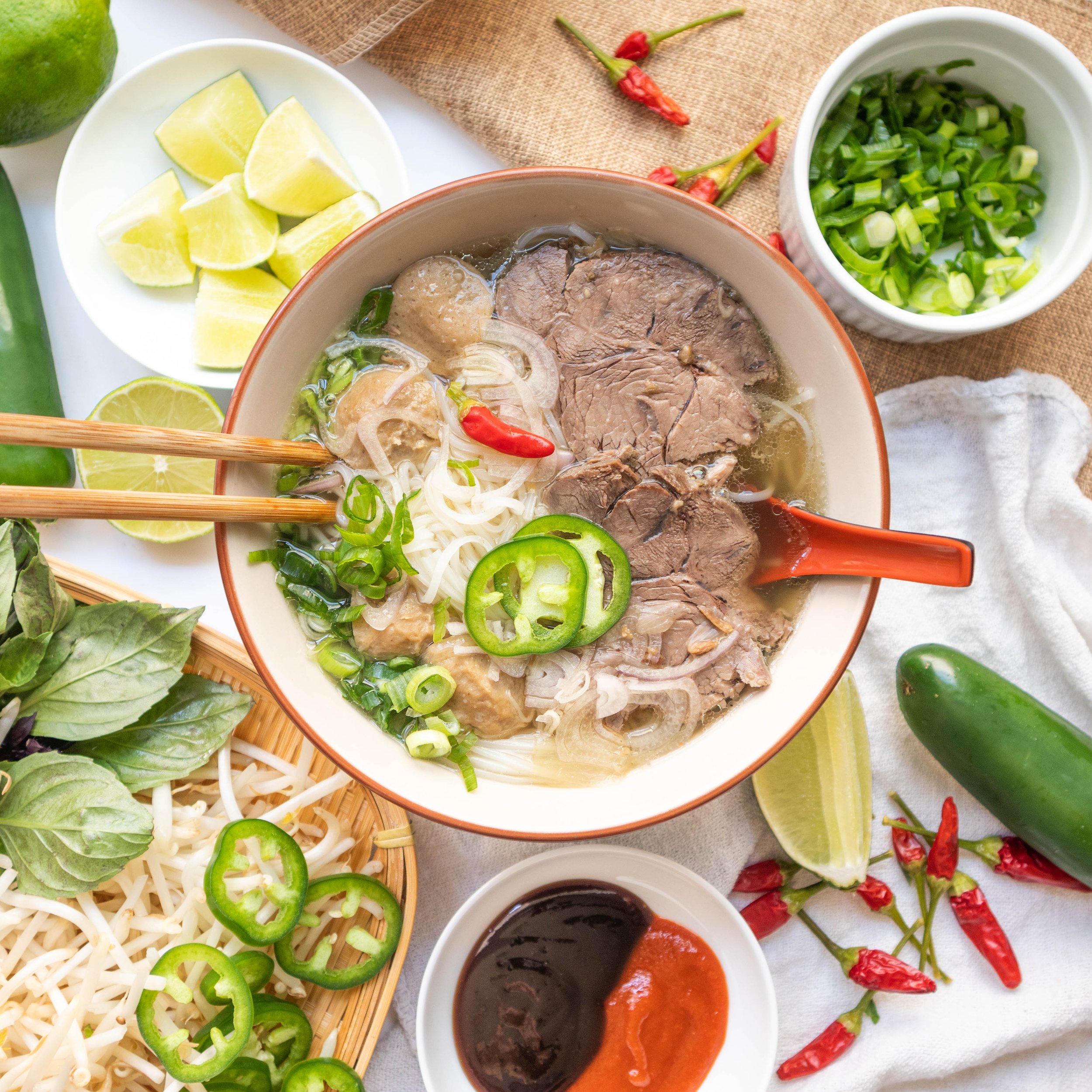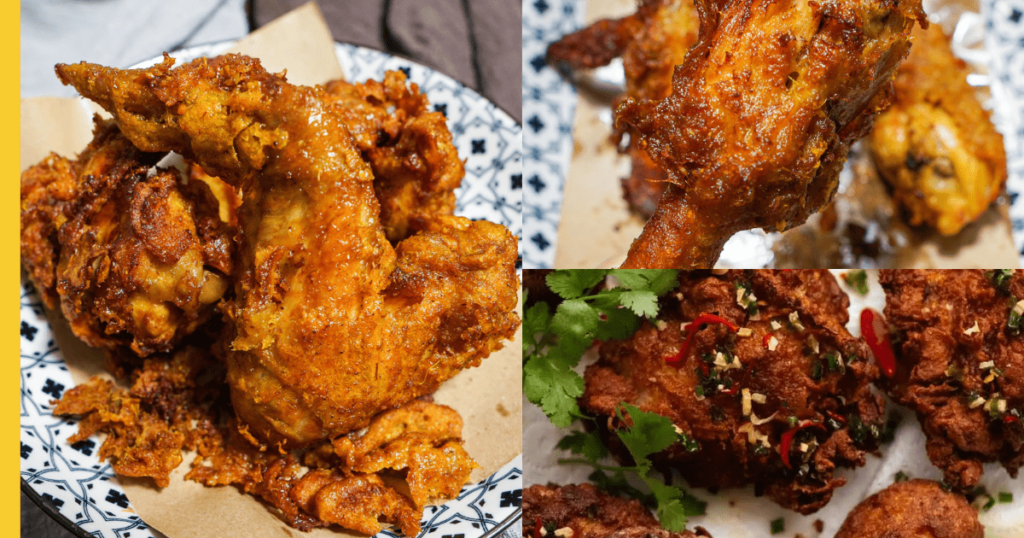A Deep Dive into Pho Bo: Vietnam’s Soulful Noodle Soup
Related Articles
- The Sweet Symphony Of Cinnamon Rolls: A Journey Through History, Recipes, And Baking Bliss
- A Culinary Journey Through North Africa: Tagines, Couscous, And Chermoula Sauces
- Embracing The Nordic Way: Cooking With Fresh Fish, Root Vegetables, And Whole Grains
- A Journey Through Flavors: Unveiling The Secrets Of Pakistani Biryani
- Shakshuka: A Culinary Journey Through Time And Taste
Introduction
Uncover the latest details about A Deep Dive into Pho Bo: Vietnam’s Soulful Noodle Soup in this comprehensive guide.
A Deep Dive into Pho Bo: Vietnam’s Soulful Noodle Soup

Pho Bo, Vietnam’s iconic beef noodle soup, is more than just a meal – it’s a cultural experience. Its fragrant broth, tender beef, and chewy rice noodles are a symphony of flavors that have captivated palates for generations. This article delves into the heart of Pho Bo, exploring its history, techniques, variations, and the art of crafting a truly exceptional bowl.
A Culinary Journey: From Humble Beginnings to International Icon
Pho Bo’s journey began in the early 20th century in Northern Vietnam, born out of necessity and ingenuity. The French colonial period brought with it the introduction of beef, a new ingredient for Vietnamese cuisine. Combining this with readily available rice noodles, street vendors created a quick and nourishing meal that quickly gained popularity.
The name "Pho" itself is believed to be derived from the French word "feu," meaning "fire," reflecting the broth’s long, slow simmering process. "Bo," meaning "beef," denotes the key protein component.
Pho Bo’s evolution has been marked by constant innovation. While its core elements remain the same, regional variations, personal preferences, and culinary experimentation have enriched its diversity. Today, Pho Bo is not just a national treasure but a global culinary phenomenon, enjoyed by millions worldwide.
The Essence of Pho Bo: Deconstructing the Flavors
The magic of Pho Bo lies in the harmonious interplay of its components. Let’s break down the key elements that contribute to its unique character:
1. The Broth (Nước Dầm): The Heart of the Soup
The broth is the soul of Pho Bo, carrying the essence of flavor and aroma. It’s a labor of love, requiring hours of simmering to extract the full potential of the ingredients.
Traditional Ingredients:

- Beef Bones: The foundation of the broth, rich in collagen and flavor.
- Spices: A carefully curated blend of star anise, cloves, cinnamon, cardamom, coriander, and black peppercorns.
- Ginger: Adds a subtle warmth and depth of flavor.
- Onion: Provides sweetness and rounds out the broth.
- Fish Sauce: A key ingredient for umami, lending a salty, savory note.
Modern Variations:
- Chicken Bones: Some variations use chicken bones for a lighter, more delicate broth.
- Mushroom Broth: Vegetarian options often incorporate dried mushrooms for a rich, umami-packed broth.
- Vegetables: Adding carrots, celery, or daikon to the broth adds sweetness and complexity.
2. The Noodles (Bún): The Perfect Complement

Rice noodles are the canvas for Pho Bo, providing a soft, chewy texture that complements the broth and toppings. They are typically made from rice flour and water, creating a delicate, gluten-free base.
Types of Rice Noodles:
- Pho Noodles: These are flat, wide noodles, specifically designed for Pho Bo.
- Bun Noodles: Slightly thinner and rounder, these noodles are commonly used in other Vietnamese dishes.
- Vermicelli Noodles: Fine, thread-like noodles, often used in salads and cold dishes.
3. The Beef (Thịt Bò): The Star Ingredient
Pho Bo’s beef is the centerpiece, adding protein and a satisfyingly savory flavor. It’s typically sliced thinly and cooked to your preference, ranging from rare to well-done.
Popular Beef Cuts:
- Flank Steak: A lean, flavorful cut, perfect for slicing thinly.
- Brisket: A tougher cut, best for slow cooking to achieve tenderness.
- Short Ribs: Marbled with fat, providing rich flavor and tenderness.
- Eye of Round: A lean and versatile cut, suitable for both grilling and stir-frying.
4. The Garnishes (Chả): The Finishing Touches
Garnishes are the final touch, adding visual appeal, texture, and flavor to the bowl.
Essential Garnishes:
- Fresh Herbs: Basil, cilantro, mint, and Vietnamese coriander (ngo gai) are must-haves, adding freshness and aroma.
- Bean Sprouts: Add a crisp crunch and a slightly sweet flavor.
- Lime Wedges: A squeeze of lime juice brightens the broth and balances the flavors.
- Chilli Peppers: Optional, but a dash of chili adds a fiery kick.
- Pickled Ginger: Provides a refreshing counterpoint to the rich broth.
The Art of Crafting a Perfect Pho Bo: A Step-by-Step Guide
Now that we’ve explored the components, let’s embark on the journey of making your own Pho Bo masterpiece.
1. Preparing the Broth: The Foundation of Flavor
- Start with the Bones: Rinse beef bones thoroughly and place them in a large pot.
- Add the Spices: Combine star anise, cloves, cinnamon, cardamom, coriander, and black peppercorns in a cheesecloth bag or tea infuser. Add this to the pot.
- Incorporate the Aromatics: Add ginger slices, whole onion, and fish sauce to the pot.
- Cover and Simmer: Fill the pot with water, ensuring the bones are fully submerged. Bring to a boil, then reduce heat and simmer for at least 4 hours, skimming off any foam that forms.
- Strain and Season: Strain the broth through a fine-mesh sieve, discarding the solids. Adjust seasoning with salt and sugar to taste.
2. Cooking the Noodles: The Chewy Base
- Cook the Noodles: Bring a large pot of water to a boil. Add Pho noodles and cook according to package directions, usually 2-3 minutes.
- Drain and Rinse: Drain the noodles and rinse with cold water to stop the cooking process.
3. Preparing the Beef: The Star of the Show
- Slice the Beef: Thinly slice your chosen beef cut against the grain.
- Marinate (Optional): You can marinate the beef in soy sauce, fish sauce, sugar, and a touch of garlic and ginger for added flavor.
- Cook the Beef: Bring the broth to a simmer. Add the beef slices and cook until desired doneness.
4. Assembling the Bowl: The Final Touch
- Divide the Noodles: Place a generous portion of cooked noodles in a large bowl.
- Pour the Broth: Ladle the hot broth over the noodles.
- Add the Beef: Arrange cooked beef slices over the noodles.
- Garnish with Herbs: Add fresh basil, cilantro, mint, and Vietnamese coriander to your liking.
- Add Bean Sprouts: Scatter a handful of bean sprouts over the bowl.
- Serve with Accompaniments: Provide lime wedges, chili peppers, pickled ginger, and hoisin sauce on the side.
5. Enjoying Your Pho Bo: A Symphony of Flavors
Your Pho Bo is ready to enjoy! Take a moment to appreciate the rich, aromatic broth, the tender beef, and the refreshing crunch of the garnishes. Each spoonful is a celebration of Vietnamese culinary tradition and a testament to the art of slow food.
Tips and Tricks for a Delicious Pho Bo Experience
- Broth is Key: Invest time in crafting a flavorful broth. The longer you simmer, the deeper the flavor.
- Fresh Ingredients: Use fresh herbs and spices for the best flavor.
- Experiment with Beef: Try different cuts of beef to discover your favorites.
- Customization is King: Pho Bo is a customizable dish. Add or omit ingredients to suit your taste.
- Don’t Overcook the Beef: Cook the beef to your desired doneness, but avoid overcooking, as it can become tough.
- Enjoy with Hoisin Sauce: A dollop of hoisin sauce adds a sweet and savory depth to the bowl.
- Embrace the Spice: Add a pinch of chili flakes or sriracha for a fiery kick.
- Warm Your Bowl: Preheating your bowl before serving helps keep the broth hot.
Exploring the World of Pho Bo Variations
Pho Bo’s versatility allows for endless variations, catering to diverse tastes and dietary needs.
1. Regional Variations:
- Hanoi-Style Pho: Known for its clear, light broth and thin noodles.
- Saigon-Style Pho: Features a richer, more flavorful broth and thicker noodles.
- Hue-Style Pho: Often includes lemongrass, ginger, and a touch of sweetness.
2. Meat Variations:
- Pho Ga (Chicken Pho): Uses chicken instead of beef, creating a lighter and more delicate broth.
- Pho Tai (Rare Beef Pho): Features thinly sliced, rare beef that cooks in the hot broth.
- Pho Cha (Beef Brisket Pho): Emphasizes slow-cooked beef brisket for a tender, flavorful experience.
3. Vegetarian Options:
- Pho Chay (Vegetarian Pho): Uses mushroom broth, tofu, and various vegetables for a flavorful vegetarian option.
- Pho with Mushroom Broth: A rich, umami-packed broth, perfect for meat-free pho.
4. Fusion Variations:
- Pho with Spicy Broth: A fusion twist that incorporates chili peppers or sriracha for a fiery kick.
- Pho with Curry: A combination of pho broth and Indian curry spices, creating a unique flavor profile.
5. Innovative Approaches:
- Pho Noodles in a Salad: Cold Pho noodles tossed with fresh vegetables, herbs, and a light dressing.
- Pho-Inspired Dumplings: Pho-flavored fillings encased in delicate dumplings.
Pho Bo: More Than Just a Meal
Pho Bo is a culinary masterpiece that embodies the spirit of Vietnamese cuisine. Its rich history, diverse variations, and the art of its preparation make it a truly special dish.
Beyond its delicious flavors, Pho Bo represents a cultural symbol, a testament to the resourcefulness and culinary ingenuity of the Vietnamese people. It’s a dish that brings people together, fostering a sense of community and shared culinary joy.
So, whether you’re a seasoned Pho Bo enthusiast or a curious newcomer, we invite you to explore the world of this iconic noodle soup. Embrace the flavors, experiment with variations, and savor the experience of this culinary treasure.
Closure
Thank you for reading! Stay with us for more insights on A Deep Dive into Pho Bo: Vietnam’s Soulful Noodle Soup.
Don’t forget to check back for the latest news and updates on A Deep Dive into Pho Bo: Vietnam’s Soulful Noodle Soup!
We’d love to hear your thoughts about A Deep Dive into Pho Bo: Vietnam’s Soulful Noodle Soup—leave your comments below!
Stay informed with our next updates on A Deep Dive into Pho Bo: Vietnam’s Soulful Noodle Soup and other exciting topics.





